Some time ago, a student of Kawada sensei asked me to explain his approach to tsubo which he calls “devil’s points”. It took me back years, a nice invitation to revisit my past lessons.
To better understand our practice of shiatsu, we must also immerse ourselves in the traditions and folklore of Japan. Its history is inscribed in a timeline, weaving and intertwining with various currents of thought (notably China and then the West). It cannot be a freeze frame. There is also a base that will be inaccessible to us: the one that dates back to a time of oral tradition. We can at most perceive it.
The Japanese were able to take these novelties, look at them, analyze them and incorporate them into their own way of seeing and doing things without losing any of their traditions. This with a great openness and welcoming of novelty.
Thus, in our study of shiatsu, we must not take the texts at face value. Even more for the Chinese writings which are anchored in another soil, certainly fascinating too. Shiatsu is the result of the digestion and incorporation of these practices and thoughts by a people who have never let go of their roots. We can try to understand some bits of it, but we must remember that the breeding ground from which it all sprouted is closed to us. All of this belongs to another time that had other realities, other questions than today. We will remain outside at the point of emergence of conceptualization.
We then understand with our own filters, human and cultural. We can therefore make it a living practice. Understanding it and applying the same dynamic that has allowed the growth of shiatsu is also part of this same dynamic. It is to respect and honor an art in its own right.
Devil!
Let’s start with this term “devil”. In Japan, there are certainly demons but not a vision as clear-cut as “devil-angels”. This notion belongs, I think, to Judeo-Christian culture.
In Japanese mythology, we speak of yokai, supernatural beings. In this category, we find the oni, creatures with a demonic appearance from Japanese folklore. If I try to make a connection with our mythology, there is a certain proximity with our trolls or ogres. These supernatural beings are considered responsible for disasters and other misfortunes. This is perhaps the way to give form to the incomprehensible invisible.
Let’s put the context back: we are in medieval Japan, there are a few main cities but the countryside is dotted with villages. People live there and go to sell their goods and services, traveling the paths, forests and mountains. The sun sets the rhythm of the days, the seasons set the rhythm of the year, the weather dictates the activities. Men are subject to the moods of the sky and the gifts of the earth. They must follow and respect both in order to live well. There are these well-known rhythms, there are the dangers of nature. There are also these elusive ones, these blows of fate that fall on us from the sky without us being able to do anything about them, without understanding anything about them. This is the action of the oni.
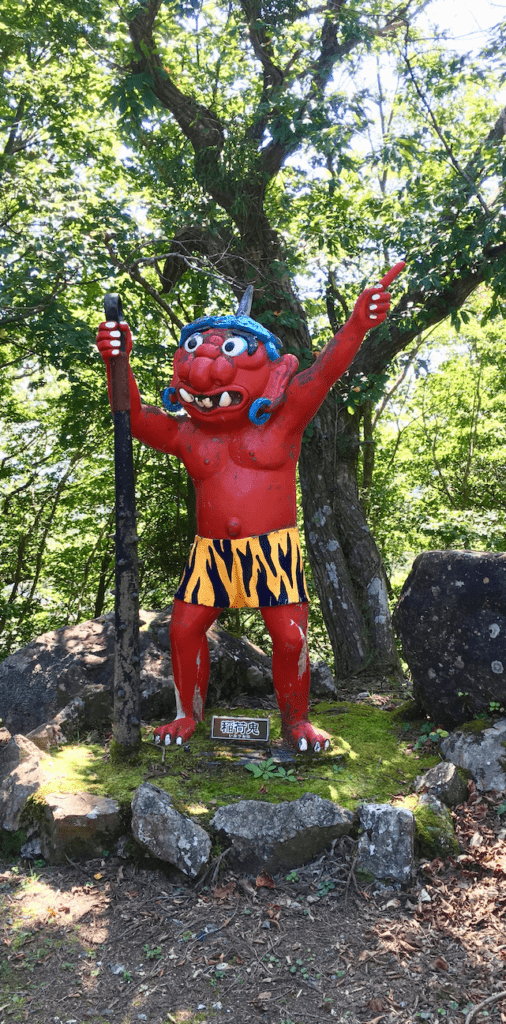
The oni is a spirit, neither good nor bad, which acts beyond human comprehension.
There is even a story in one part of Japan of an oni who terrorized the locals. The army chief sought him out, fought and defeated him. When the oni was struck down, the locals realized it was Buddha.
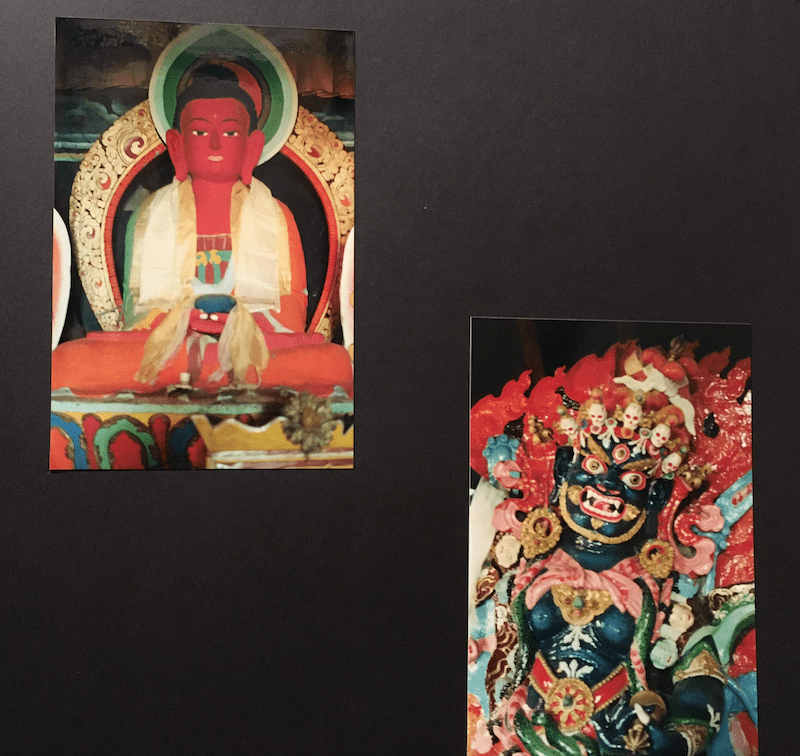
This story reminds me of a trip to Nepal where I hiked in the mountains on the border with Tibet. My guide and I were arriving in a Tibetan village and he absolutely wanted to show me the temple. This one, quite small, measured 3 or 4 meters on the side. On one of the walls was the altar with the incense and the offerings, on the adjacent wall there was a painting of Buddha with, sitting next to him, a demon of the same size. When I asked my guide who was this demon and why he was there, my guide replied astonished “it is Buddha”. Thinking that he had misunderstood my question, I repeated it as clearly as possible, explaining my misunderstanding. “It is also Buddha, it is his other side. His answer left me very perplexed and made me think, for a long time. I, who was nourished by dichotomy, black or white, was invited to reflect on the more nuanced reality in which a luminous being, like the Buddha, has its shadow counterpart represented by this demon.
Back to the oni.

This point of view invites us to step outside our categorizations and accept nuances that are difficult to understand. Yet our Judeo-Christian culture, and all of its contrasting iconography, has taught us that there is good on one side and evil on the other. However, the oni are these joking spirits who play tricks on men to bring them another form of understanding, in terms of distance and nuance.
Around the 14th and 15th centuries, no doubt with increasing urbanization, the representation of the oni became an invitation to look inward to meet its dark sides. The concept of yes, if we can speak of a concept, widened further and invited everyone to recognize their part of Nature in them, neither good nor bad, sometimes soft or brutal and due to go back to the source.
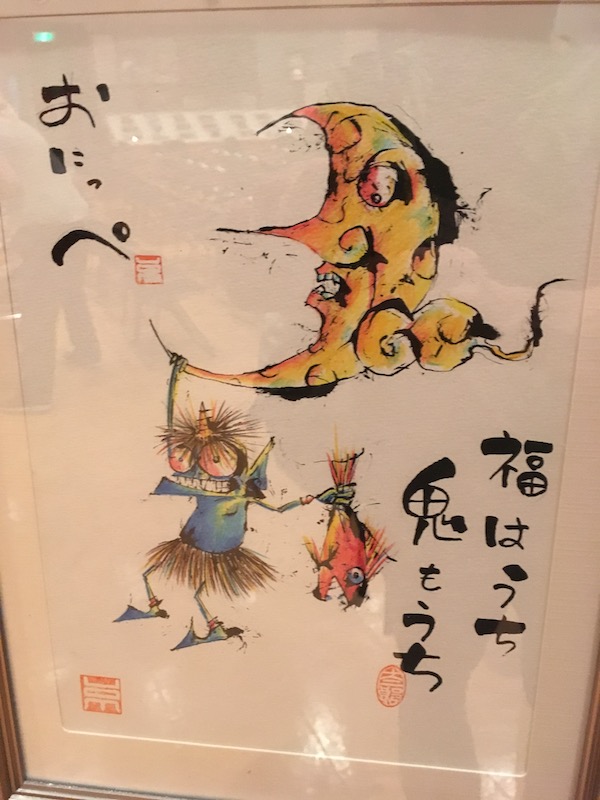
What about this Tsubo list?
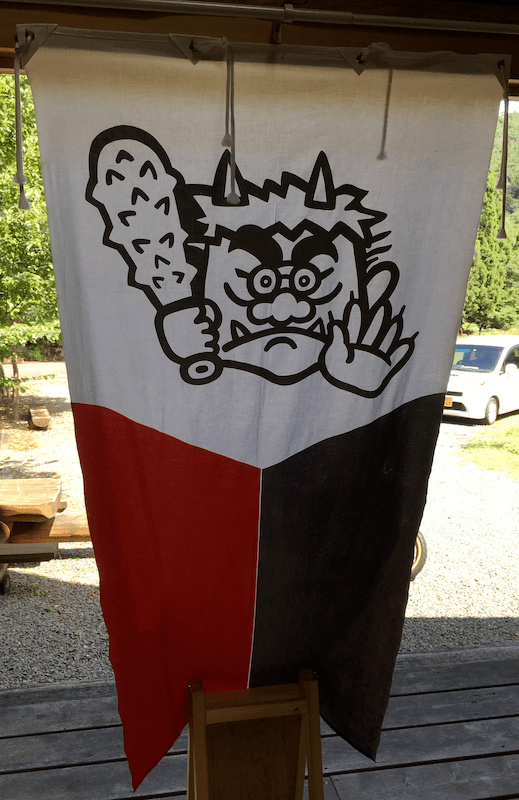
There are several lists of points. Some totally devoted to the practice of acupuncture, others adapted to manual practices.
In these cases, there is always interesting information, while taking the part of things with our practice and its framework of application.
The body is not a control panel, it is above all the person we touch.
Without revealing his list of 11 points, Kawada Senseï invites reflection. There he mentions points of the lung meridians, the ministerial meridians of the heart, the governor vessels and a point of the large intestine meridian.
Let’s start with the points of the Governor Vessels, consider the incarnation of the Shin, the soul, and the way in which the ancestral energy will be able to express itself in a body more or less marked by life (I am talking here about ancestral energy referring to the Curious Vessels. I could as well speak of kharmic or genetic energy, different prisms for the same reality). It is the rise of the yang energy that invites everyone to stand upright and move forward in their destiny. The meeting of the energy of water and fire, from the left and right kidney, takes place at the Meimon point, the gate of the heavenly mandate. Some translations will suggest “door of life” or “door of destiny”. For my part, I like this idea of a mandate from Heaven, a mission, a path that is offered to us in a limited time. I am also writing to move forward “in” his destiny and not “towards” his destiny because we are fully on the path, there is nothing to look for, we are already there.
Continue with the Minister of the Heart … This “Minister of the Heart” is the emissary of the embodied spirit. The Minister of Heart meridian is that channel that allows Shin to attempt to steer the body through his senses. This invites the transformation of fire heat into fire light, when we act with heart in our learning of Life. This channel which, at the same time as the penetrating Vessels and Xuli, the column of the void, works to open us to the great Shin, to fully embody our path.
For the Lung meridian points, I will borrow Chinese thought: the lung and its 7 po as 7 spirits that embody a potential imbalance in our flesh.
Overall, with this list of points and the symbolism of demons, we can see our bodies as marked or eaten away from within. It could cause us to become demonic ourselves if we are not careful. To recognize them is to transcend the shadow to transform it into light. It is to allow the lineage of our ancestors to grow.
To work on these points is to invite each recipient to be present to his path which was opened by his ancestors and to move forward on his own path without being eaten and controlled by his own demons.
When I was an assistant, Kawada Sensei told me that we all have our demons. If we run away from them, they grow and gain strength. If we stop and take the time to turn around to look them in the face, they become our allies.
Application to shiatsu
Reflecting on the need for nuance in everything we experience, see and think is, in itself, already important. Applied in shiatsu, for the practitioner and any other caregiver, not to judge, to recognize their own projections and to accept that each person is where they are for reasons that are inaccessible to us, on the one hand. That certain events invite us to see life differently, on the other hand. In both, take a step back to qualify what we think we see and tolerate the whole.
Regarding the points… We cannot reduce a person to a list of points, to 12 meridians, 8 Extraordinary Vessels, to yin-yang. Life is complex and we touch life through a body. An imbalance is not just osteo-articular, psychological, emotional, energetic. A symptom is a sign of an ecosystem imbalance that manifests itself in a body, an interior-exterior interaction. Our role is to understand these snippets that are offered to us, analyze and feel to trace the origin of the imbalance. We also work through our senses, our own sensitivity, our subjectivity.

The protocols, techniques, checklists of all experienced practitioners, whether Chinese doctors or Japanese researchers, have been established through their own experiences, their own subjectivity. This is why it seems to me that these lists are first of all an invitation to dig in order to go, each time, to try to see the shadow of what creates the imbalance and to establish our own protocols, our own lists of points. It is also out of respect for their research that I leave a certain veil on this list.
Good research, good practice.
If you are lost, do not hesitate to ask your questions 😉
You will also find a beautiful reflection on the hours of the spirits on this blog.

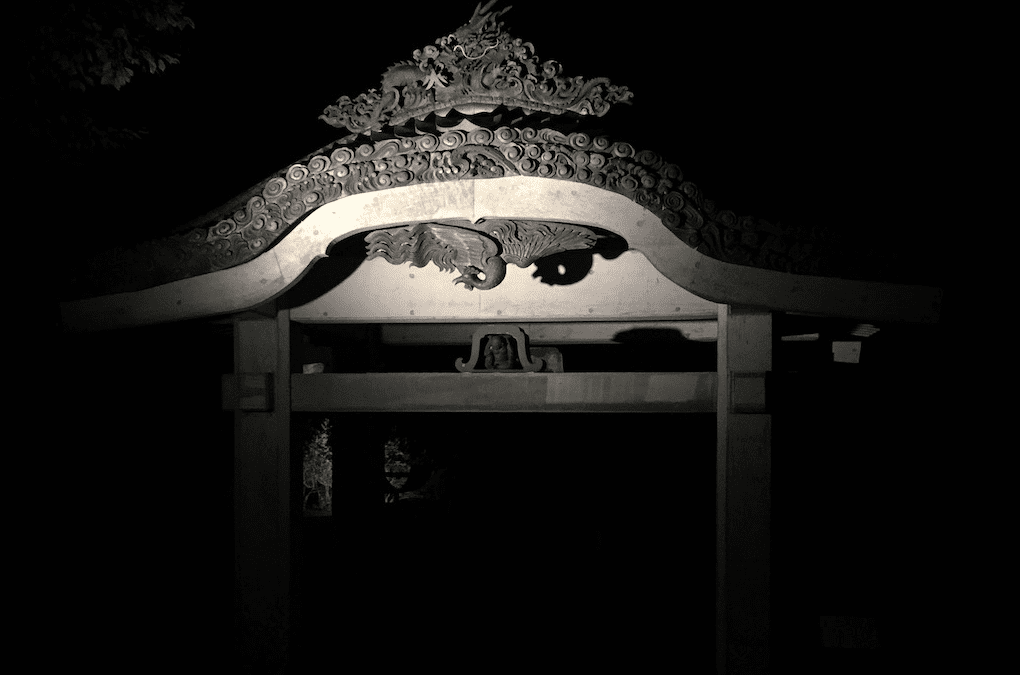
Recent Comments